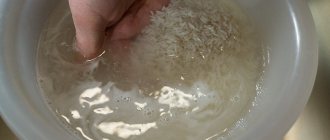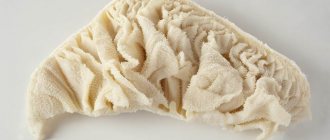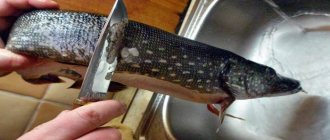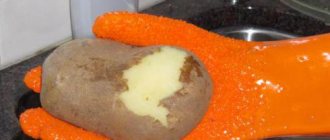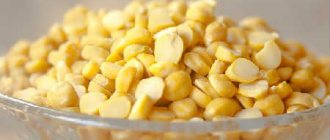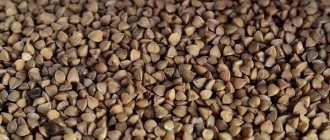Beef tongue is a product that can increasingly be found on both festive and everyday tables.
It is served as a separate dish or used as the main ingredient for a large number of salads. However, not all housewives know how to clean beef tongue. And this determines how easy it will be to prepare and how tasty the finished dish will be. What is so attractive about this product and why people buy it even though the process of its preparation is quite long.
How to remove the skin from beef tongue
Advice to housewives who read our site on how to quickly and easily remove the skin from the tongue. We will talk specifically about boiled beef tongue, since, unlike pork, it has especially thick and tough skin, which causes difficulties in removing it.
To easily remove the skin from the tongue, you need to cook the tongue for a long time and patiently until it is completely cooked. The cooking time for beef tongue depends on its size and the age of the animal. On average, the process takes 2-3 hours in a regular saucepan or 40-50 minutes in a pressure cooker (for details, see the recipe “how to boil beef tongue”).
Some housewives remove the skin from the tongue almost at the beginning of cooking, 15 minutes after the water boils in the pan, but this is inconvenient, and the process is not so simple (I can’t even imagine how to remove the skin from a raw tongue).
We recommend that immediately after the tongue has cooked and you have turned off the stove, carefully remove it from the hot broth and place it under a generous stream of cold water. The surface of the tongue will quickly cool down and the skin will come off effortlessly.
How to clean a delicacy product before smoking and salting?
If you plan to smoke or salt the beef tongue, then it should be cleaned in a completely different way.
- First, we carefully clean the component, as before cooking. True, in this case, you can do without prolonged soaking.
- Now the product should be frozen, not to completely harden the fibers, but to freeze the upper protective layer. The component can be cleaned without this, but the process will be long and troublesome.
- We take an extremely sharp knife and cut the surface layer on the slightly hardened component. We pry up the skin and begin to unwind it, tearing it away from the base. It is necessary to work in a spiral, and not along or across. If you peel the skin like you peel an orange, it won't tear and you won't have to start all over again.
The workpiece can be sent for smoking and salting. The final dish will turn out tender and juicy if you choose the right recipe and act strictly according to its advice. But it is not recommended to stew such a product; in fact, it will not retain the necessary components, and the texture will not be pleasant. For this effect, it is better to use the product boiled in the usual way.
Preparatory stage
How to cook pork tongues and peel them?
Before cooking, the product must be washed and excess fat removed, because dishes made from it are already high in calories. Veins and other inedible parts should also be removed.
You should not peel the skin off the product in its raw form, because it is difficult to do and you may lose a certain amount of meat.
To get a truly delicious dish, you need to know:
- a fresh tongue is bright red;
- if the product is fresh, then it smells pleasant, a little sweet;
- Before cooking, it is necessary to soak the product for several hours.
How long will it take
If you want to surprise guests at a celebration, you need to learn all the intricacies so that you know how to cook and how to clean. Proper serving is also important, but more on that later. How long will it take for the tongue to be completely ready for use? It depends on its weight, size and age of the cow. Therefore, you will have to navigate the cooking process.
As a rule, this is no less than two and no more than four hours. It is very easy to check this point. After 2 hours have passed, you need to stick a fork into it. If clear juice comes out, it means the appetizer is ready. If the juice is cloudy, cook until done. Now let's look at how to peel beef tongue.
Seasonings
Since by peeling boiled beef tongue we get a self-sufficient snack, we need to take care of the spices. To keep it tender, add salt just before it’s ready. You can check for softness with a fork and then put salt, pepper, and bay leaf into the water. You can also add carrots and onions to the broth.
But not all chefs agree with this procedure. Someone says that first you need to figure out how to clean boiled beef tongue. Only after this should it be lowered back into the broth, spices added and boiled for about 15 minutes. The resulting broth can be used to prepare aspic.
How to prepare offal for cooking?
The meat will turn out tender, juicy and aromatic only if it is properly pre-processed. Regardless of whether you plan to boil pork tongue or beef tongue, you need to take into account the following points:
- If you clean the component before cooking, there is a risk of ruining it beyond repair. Firstly, cleaning will take a lot of time, because... the skin will come off reluctantly. Secondly, a significant amount of the edible part will definitely be removed along with it. Finally, such a protective film retains moisture, making the dish juicy.
- But all excess meat and fat should be cut off. Their presence increases the calorie content of the broth, especially if it is pork tongue. Because of this, the dish turns out to be too rich and even greasy.
- Even if the offal is purchased in a good store and has obviously been pre-treated, it should be washed and scrubbed with a brush.
- It is worth considering that the tongue cooks for several hours, so you will have to add water during the process. To do this, you should stock up on boiled water; you should not use tap liquid or drinking water.
When planning to boil pork tongue, you should consider using a slow cooker. It makes the offal especially tasty. But for beef preparation, the traditional option is better - in a pan.
List of required tools
Pork tongue, like beef tongue, can be cleaned raw or boiled. The second option is preferable, but in any case, the procedure will require a knife, a container of water and a metal scraper.
To clean your tongue with minimal loss of valuable meat, you must first boil it. Otherwise, a lot of pulp will be cut off along with the skin. And it will take much more time to clean.
If you purchased frozen tongue, you must first defrost it at room temperature. It is not recommended to speed up the thawing process using heat. Such manipulations negatively affect the structure of the pulp - it becomes dark and hard.
And it is best to buy a fresh product that has not been frozen. The age of the pig also plays a role; the younger it is, the more tender the meat will be.
Nutritionist's opinion
Today we looked at how to properly clean beef tongue. This will allow many housewives to decide what to serve as a snack. It costs less than sausage, and looks even more interesting. But despite the excellent taste of the delicacy and low fat content, it is not recommended to eat it too often and in large quantities.
The high content of a number of components creates an increased load on the kidneys. This restriction is especially important for older people.
How to quickly clean a pork tongue?
Difficulties that inexperienced housewives may encounter may lie in improperly cleaning the tongue. But if you do everything correctly, then no difficulties will arise.
How to properly clean a pork tongue? To do this, you must follow some rules:
- Be sure to cook the delicacy, because it is impossible to clean the raw product.
- Be sure to cook it until cooked, i.e. at least 2 hours. If heat treatment is carried out for a shorter amount of time, it will be difficult to clean the tongue.
- The product must be cleaned immediately after cooking, when it is still hot. To avoid burning your hands, place your tongue in cold water.
- Cleaning should be done quickly while the product is still hot. As it cools, this will be difficult to do, and the tongue will have to be dipped into boiling water after a certain time.
How to clean a pork tongue? When the tongue is cooked, you need to remove it from the hot water with tongs or a fork and place it on a plate. To facilitate the process, the dishes can be placed under running cold water. You need to hold the tongue at its base with one hand, and gradually remove the skin with the other. Quickly pull the skin towards the tip of the product and direct water between the skin being torn off and the rest of the tongue. This should be done immediately after cooking, without waiting for the product to cool.
If you cannot easily peel the delicacy, this means that it is not ready yet. In this case, it is better to bring it to readiness.
When making a dish such as baked tongue, the skin should also be removed immediately after cooking, without waiting for cooling. These are the two main ways to clean a pork tongue.
Useful properties of the product
It contains many microelements and vitamins:
- sodium;
- potassium;
- magnesium;
- iron;
- calcium;
- copper;
- phosphorus;
- vitamins B and PP.
Due to the vitamin content, the product has a positive effect on the nervous system and helps the liver. The tongue contains so much iron and calcium that doctors recommend including it in the diet of pregnant women and children.
The product does not contain coarse fibers, so it is easily absorbed by the body and can be consumed by people who have problems with the digestive system. It can be safely included in the diet of those who are struggling with excess weight.
The delicacy is perfect for the holiday table, when you really want to pamper your friends and loved ones with delicious food.
Calorie content and chemical composition
Depending on the age and living conditions of the animal, the calorie content of boiled pig tongue is more than 200 kcal per 100 g of finished product, with approximately the same amount of fat and protein (16 g each). As for carbohydrates, they are either completely absent here or their amount does not exceed 1 g, making this delicacy suitable for use in various diets.
At the same time, with such nutritional value, its vitamin and mineral composition cannot be called poor, because among the useful components there are:
- vitamins - group B (B1–B3, B6, B9, B12), E, PP;
- microelements - iron, cobalt, manganese;
- macroelements - phosphorus, magnesium, potassium, sodium, calcium.
On average, one boiled pork tongue weighs about 300 g, so if you need to accurately calculate all the calories, it is recommended to proceed from this value.
Step-by-step instructions on how to boil and peel pork tongue:
Prepare pork tongue (weighing about 300 g), carrots (0.5 pcs.), onions (1 pc.), bay leaf (1 pc.), black peppercorns (6 pcs.), cloves (3 pcs.), salt (0.75 tsp), water.
Wash the pork tongue thoroughly, clean the remaining dirt with a sharp knife, scrape off the coarse coating, and cut off the larynx.
We clean the carrots and onions. Cut the carrots into large pieces, cut the onion into 6-8 parts, without cutting all the way from the tail side. You need to stick a clove into the onion.
Place the prepared tongue in a small saucepan and fill it with cold boiled water so that it covers the tongue by 1 cm.
Add onions, carrots, bay leaves, and black peppercorns to the tongue. Place on the stove, bring to a boil over high heat under the lid, then reduce the heat to low and cook the tongue. After 30 minutes, salt the water and remove the bay leaf. We continue to cook the tongue.
After 1.5 hours, the pork tongue is ready! If the tongue is larger, the cooking time increases.
We take it out, check its readiness with a fork - the flowing juice should be clear, and the tongue itself should be soft. We clean it under cold running water - the skin comes off easily! You need to clean your tongue while it’s hot, immediately after cooking, and under running cold water! This is an important point at which the skin will be removed easily and almost effortlessly!
If you cannot clean the entire tongue under running water, use a knife to clean it on a cutting board, lightly scraping the skin.
We use the finished peeled tongue for its intended purpose - we serve it as a hot or cold meat appetizer, we use it to prepare salads, sandwiches and other dishes!
Fresh pork tongue has a uniform color when cut. The larger the tongue, the longer it will take to cook! In the same way, you can boil and peel beef and veal tongue.
Pork tongue is truly a delicacy. It is served as an independent cold appetizer, and is also included in various salads. If this product is prepared correctly, it will be soft, tender and have an incredible taste.
In the process of preparing such a dish, the question arises of how to properly clean the pork tongue, because it is necessary to do this not only quickly, but also in such a way that after removing the film, as much pulp as possible remains and it retains its aesthetic appearance. It should look very neat if the pork tongue is served as a separate dish.
Pip – diagnosis or harmless pimple
The opinion of doctors about the reasons why a pip appears on the tongue does not coincide with the opinion of people far from medicine. The object of folk omens is a rather serious inflammation of the oral cavity, which has an infectious or traumatic origin. Glossitis is the official diagnosis.
Glossitis can easily be confused with stomatitis of the oral cavity, but an experienced specialist will differentiate the diagnosis based on the specific primary location of the inflammation and find out the cause of the appearance of a pip on the tongue.
Primary localization
The target of glossitis is always the tongue, an organ consisting entirely of soft tissue. Its main segments:
- root – 1/3 part;
- body – 2/3 parts;
- back - surface facing the sky;
- bridle.
The organ is covered on top by a mucous membrane with stratified epithelium. On the back, tip and sides of the organ, the epithelial lining forms special tubercles - taste buds, thanks to which a person distinguishes the taste, temperature and consistency of food.
Pip appears when the inflammatory process develops specifically on the papillae. Moreover, its primary localization always affects the area of taste buds. In the future, the inflammation can spread to other parts of the oral cavity, at which point the disease is difficult to distinguish from stomatitis.
Usually glossitis begins with a small pimple or ulcers that appear on the tongue. Less commonly, pathology manifests itself as color and structural changes in the epithelium.
Types of glossitis
The disease occurs in acute or chronic form. In order to get rid of the pip on the tongue in a timely manner, you need to study the “enemy” in detail. In medicine, there are 9 types of glossitis:
Catarrhal. The inflammatory process develops due to the penetration of infection through microcracks. Manifestations: minor damage, swelling, hyperemia. Exfoliative or “geographic tongue”. It manifests itself as color and structural changes in the area of the back and end of the tongue. If you look at the photo, you can see that the lesions actually look like a map of the hemispheres. Exfoliative glossitis is an alarming signal indicating hematological diseases, gastrointestinal disorders, neuroendocrine pathologies, and metabolic failures. Allergic reactions also lead to “artistic coloring”.
Diamond type. A geometrically shaped area (rhombus or square) with atrophied taste buds forms on the midline of the tongue. There are smooth, lumpy or papillomatous forms of the disease. It is provoked by fungal infections, smoking, and gastroenterological problems.
The candidiasis type of disease is a fungal infection of the back and tip of the tongue, manifested by a white coating. The cause is poor immunity, disruption of microflora in the mouth.
Atrophic appearance. A specific sign of this form of pathology is an unnaturally smooth red tongue. Other signs: group ulcers with severe pain, unpleasant odor. Sometimes the disease signals HIV infection, gonorrhea, or neoplasm.
Folded shape. Multidirectional folds/furrows form on the surface of the tongue. Initially, this pathology is an anatomical feature, but the folded structure is a favorable environment for the spread of pathogenic microflora. Villous tip. Almost from the very tip, the tongue is covered with filiform papillae elongated to 3 mm. Due to their brownish color and horny structure, they look like coarse hairs. This is a rare type of glossitis that exclusively affects men. The exact cause of the strange changes in the papillae has not been established.
Ulcerative form. Ulcerative glossitis often develops as a result of dental problems. This pip (see photo) looks like small ulcers on the tongue; treatment requires eliminating the root cause.
Phlegmonous/deep glossitis is an extremely aggressive form of the disease that should be treated under strict medical supervision. The lesion instantly spreads to deep tissues, and under unfavorable conditions it quickly reaches the neck and chin. Manifestations: abscess, temperature up to 39 °C, enlarged and painful cervical lymph nodes, in advanced situations - phlegmon.
Glossitis is not so harmless. They arise both as independent diseases and as complications of chronic pathologies of other systems, and cause the patient a lot of unpleasant sensations.
How to choose
If the product is not fresh or has been frozen and defrosted several times, then you are unlikely to be able to prepare a tasty and appetizing dish, so it is better to take the advice of experienced chefs so as not to make a mistake in your choice:
- the color of the tongue should be bright pink or purple, a pale pink shade is obtained after defrosting, and gray when the product begins to deteriorate;
- the smell should not cause unpleasant sensations. If a foreign aroma is felt, it means that the product was soaked with potassium permanganate or other additives;
- A clear liquid and drops of bright red blood should appear on a cut of a fresh product.
There is an easier way to determine the freshness of beef tongue - press the tongue with your finger. If the shape is restored within 10-15 seconds, then it is a fresh product. Otherwise, one should doubt its quality.
The benefits of the finished dish will depend on the amount of time spent on its preparation. The longer the tongue is cooked, the less nutrients remain.
The age of the animal can be determined by the weight and color of the offal: the tongue of a young calf weighs up to 1 kg, and an adult animal weighs 2-2.5 kg. A bright pink color indicates that the animal was still young, and a dark red color with a purple tint indicates that the animal is quite old.
The supermarket usually sells frozen food. To prevent it from losing its beneficial properties, defrosting is done gradually, avoiding temperature changes. The bottom shelf of the refrigerator or a bowl of cold water is suitable for these purposes.
Now you can start cleaning the offal.
Selection of quality raw materials
No cooking method can correct the quality and taste of a stale, stale product, especially one with a “smell.” All the beneficial properties of the tongue are inherent only in fresh, high-quality meat. This is a product without signs of weathering, without spots and color unusual for meat - this is what the tongue should look like. By the way, the spots may be from the color of the animal’s tongue, but they cannot be confused with rottenness and signs of spoilage of the product.
An adult animal will have a very large tongue, but this may also be an indicator of old age. It will take a long time to cook.
More nutrients are found in the meat of an adult, but not an old animal. Veal, pork and lamb tongues are inferior in their benefits to beef, but are an alternative substitute due to their greater availability in stores and due to their lower cost.
What can you cook with your tongue?
In addition to the traditional snack, it can be jellied meat or aspic, in which pieces of tongue and boiled carrots will act as filler. Choose a bouquet of seasonings that you like best, and the dish will turn out simply fantastic. In addition, boiled tongue serves as a component for more than ten delicious salads. It goes surprisingly well with mushrooms and prunes, and pickled vegetables. It can be salted or smoked, served with hot onions or sour cream sauce.
Any of these options will guarantee a great big hit with your guests. Get ready for housewives to ask how to clean boiled beef tongue. Despite the simplicity of the technology, not everyone knows how to do it correctly. But it’s so simple and doesn’t require special skills!
Interpretation of sleep from other sources
To reveal the meaning of the dream, the sleeper can turn to special dream books:
- Modern dream book. Seeing your own language means that in real life, friends or relatives will turn away from the dreamer. To injure - to problems associated with careless statements on the part of the sleeper. If the dreamer or another person cuts it off, an important decision at work will be made without taking into account his opinion. Seeing short - to profit, long - to losses. Symbolizes the need to keep your own thoughts to yourself. It is recommended to reconsider the moral and life principles associated with communication with other people.
- Family dream book. Seeing your partner stick it out of your mouth means major conflicts in your relationship with your husband/wife.
- Interpreter of the Wanderer. Seeing it in a dream means unpleasant conversations with friends. Swollen or wounded - to harm from excessive talkativeness. Long - to the partner’s illness.
- Esoteric dream book. Looking at your own tongue is a warning; the sleeper should not tell others his secrets, otherwise everyone will find out about them.
- Indian interpreter. If a woman dreams of a shortened tongue, it means that strangers will respect her person.

